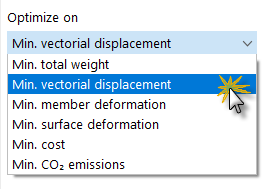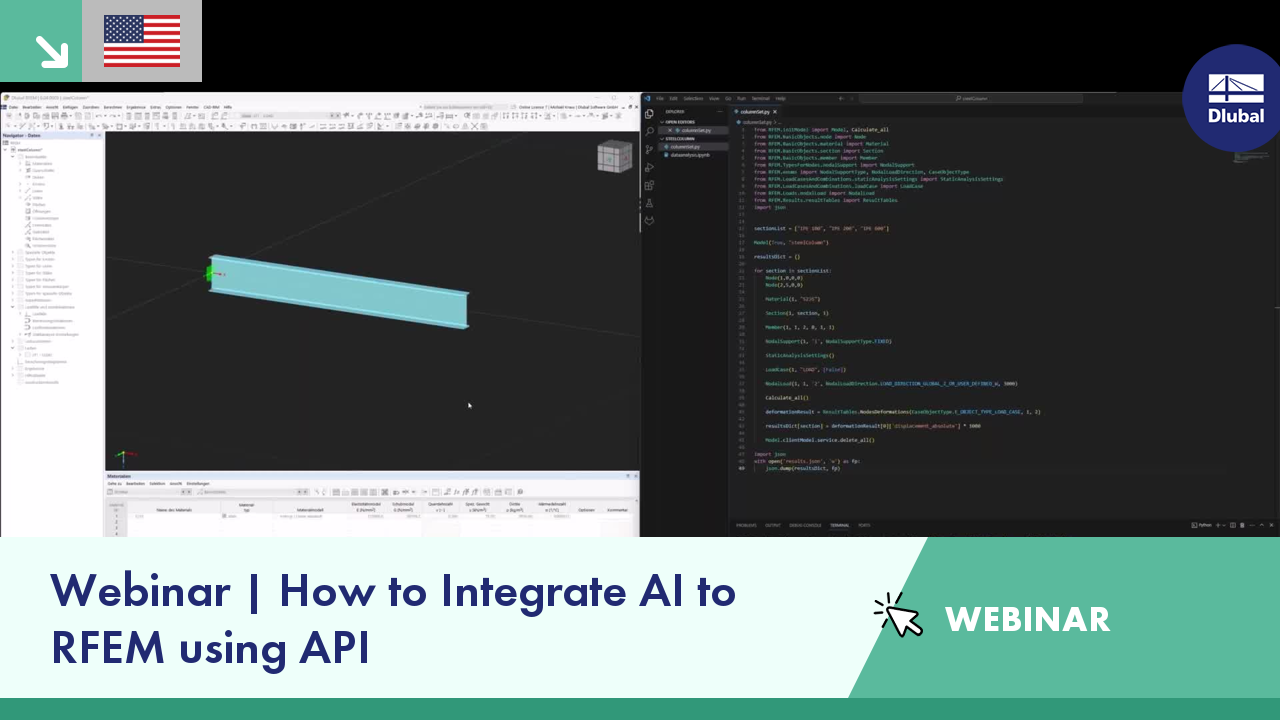The global parameters of the "Optimization" type has been defined. Now, open the Optimization Settings using the "Calculate" menu.
Set the optimization using the corresponding Active check box. As shown in the image Optimization Settings, the values to be optimized are actually the global parameters. The number of states depends on the number of steps that have been assigned in the optimization parameters. For example, four steps mean that the optimization process ends as soon as reaching five states. Using two variables, there are thus 25 optimization variations, the so-called mutations. In other words: The program changes the values of the two variables within the defined range. These combinations result in the calculation of 25 models with different geometry.
There can be many optimization mutations. Therefore, you can decide how many model variants you would like to "best" generate by defining the priorities as the basis for the optimization. For example, you can set the optimization to the minimum total weight, vectorial displacement, member or surface deformation, costs, or CO2 emissions.
Now, it is possible to calculate all optimization mutations. After starting the calculation, the results of the individual variants are displayed one by one.
Optimization Methods
The program offers even more efficient optimization methods though.
The method used in this example is called particle swarm optimization (PSO). It is based on nature and represents a very efficient method for finding good parameter values while using less calculation time. This artificial intelligence (AI) technology has a strong analogy to the behavior of flocks of animals, looking for a resting place. In such swarms, there are many individuals (cf. the optimization solution, for example, a weight) who like to stay in a group and follow the group movement. With the assumption that every single swarm member has a need to rest at an optimal resting place (cf. the best solution, for example, the lowest weight) and that this need increases as the resting place is approached, the swarm behavior is also influenced by the properties of the space (cf. the result diagram).
The PSO process in RFEM or RSTAB takes a similar approach. The calculation run starts with an optimization result from a random assignment of the parameters to be optimized and repeatedly determines new optimization results with varied parameter values, which are based on the experience of the previously performed model mutations. The process ends as soon as the specified number of possible model mutations is reached. In our example, the number of random mutations is set to 30%. This means that 30% of all possible mutations (25) are taken into account.
































.png?mw=350&hash=d538a044ed58714e93ef2f2fb0fe731b25e855ee)






.jpg?mw=350&hash=7ecb25ca2a1442e4f8137ff368d300efd3534e28)















-querkraft-hertha-hurnaus.jpg?mw=350&hash=3306957537863c7a7dc17160e2ced5806b35a7fb)




